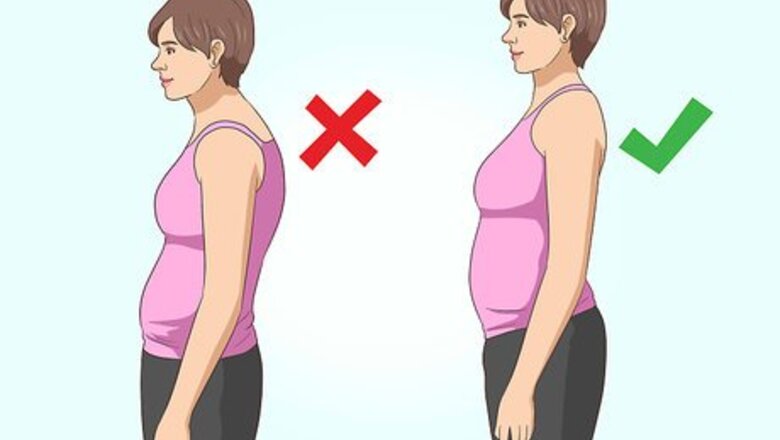
views
X
Trustworthy Source
Cleveland Clinic
Educational website from one of the world's leading hospitals
Go to source
People who are overweight, have poor posture, or who exercise incorrectly are at risk of having their abdominal muscles separate. It's especially common during and after pregnancy because of the strain placed on the abdomen by the growing baby.[2]
X
Research source
However, with a few simple techniques and exercises, you can prevent diastasis recti.
Reducing Pressure on Your Abdominal Muscles

Improve your posture and engage your core muscles while standing. Stand up straight without slouching. Make sure your shoulders are in line with your hips so that your back isn’t overly arched. Tuck your chin in. Distribute your weight evenly on both feet. Support your posture by rooting all 4 corners of your feet into the ground. Then, engage your quads, glutes, and core to stand up straight. It may take practice, but good posture becomes a habit if you're consistent. Standing sway back, with your hips and stomach pushing forward and your shoulders slouched, can lead to diastasis recti. This posture leaves your core, inner abdominal muscles, gluteus, and trapezius muscles weak.

Make sure you’re pushing a stroller correctly, especially uphill. Don’t lean too far forward or place too much of your weight on the stroller. This creates too much pressure on your abdominal muscles. Tuck your hips under and use your glutes and leg muscles instead of your lower back muscles to support yourself and power up the hill. Ask older children to get out and walk going uphill to reduce the amount of weight that you’re pushing. Women who are pregnant and have already had children are prone to diastasis recti. Mothers of toddlers who are pregnant with their second or third (or fourth!) child often spend a lot of time pushing their older kid(s) around in strollers, as well as lifting their children. It’s important to use good form, because pushing a stroller incorrectly can increase abdominal separation.
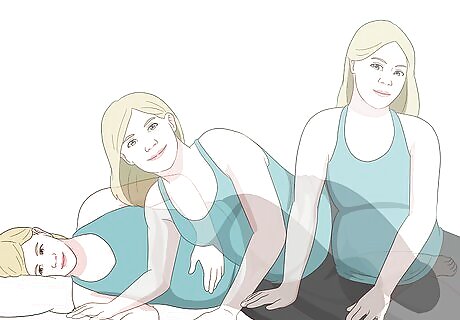
Roll onto your side before sitting up during pregnancy. Sitting straight up from a prone position puts a lot of pressure on the abdominal muscles and can exacerbate diastasis recti. Instead, roll onto your side with your knees together and slightly bent. Push yourself up into a sitting position with your arms. If you’re struggling to roll onto your side, use your arms and legs to help you turn over. If you’re in bed, prop a pillow behind your back to keep yourself on your side all night. As your pregnancy progresses, you should be trying to sleep on your side, especially your left side, anyway to improve the flow of blood and nutrients to the placenta.
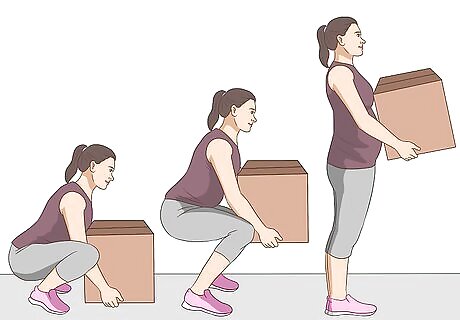
Avoid heavy lifting when you’re pregnant. If you do have to lift a heavy object, practice safe techniques. Bend at your knees, not your waist, to pick up the object. Keep your back straight and push up with your legs. Avoid any sudden jerking movements.
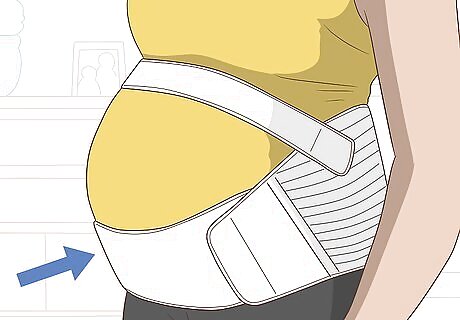
Wear a belly band for support during pregnancy. Wrap the band around your belly under your bump. Attach it with clasps or Velcro, depending on the brand of the band. Adjust it until it feels comfortable. Attach another band across the top of your bump if it’s included in your package. Belly bands can help physically bring the abdominal muscles closer together. Wear the belly band while you exercise or go about your daily activities. You can continue wearing the belly band postpartum for additional support. Don’t wear the belly band for more than 2 to 3 hours at a time. Always check with your doctor before wearing any compression garment. If you have compromised circulation or your blood pressure is too high or low you might not be a good candidate for wearing a belly band. Wearing this support band while pregnant can also help if you have unhealed abdominal separation from a previous pregnancy.
Keeping your Core Strong When You’re Pregnant
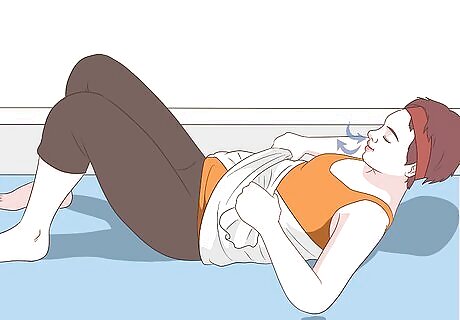
Do modified crunches to manually pull the abdominal muscles together. Lie on your back with your feet flat on the floor and your knees bent. Wrap your hands or a towel or belly band around your waist and pull your right and left abdominal muscles together. Breathe in deeply to expand your belly. Exhale slowly while contracting your abs. Suck them inward and raise your head off the floor. Go back to the starting position and repeat. Try 2 sets of 12-15 reps, or as many as your body feels comfortable with. Many fitness experts will caution you against doing any crunches when you’re pregnant, stating that the crunching motion can increase pressure on your abdominal muscles and worsen separation. However, recent research shows that crunches are safe and effective exercises for strengthening the core muscles when you perform them correctly. Be sure that you engage your transverse abdominal muscles before doing a crunch. If you do crunches incorrectly, it can worsen diastasi recti. Only perform these exercises after you've consulted with a doctor and preferably a personal trainer to ensure that you are using correct form.

Use an exercise ball for pelvic tilts with crunches. Sit on a stability ball and slowly roll down until your lower back is resting comfortably on it. Keep your feet directly below your knees and place your hands gently behind your neck to support your head. Breathe out while lifting your shoulders slightly off the ball and pressing your hips up. Squeeze your lower abs, glutes, and pelvic floor. Breathe in while slowly lowering your shoulders and hips to the starting position. Don’t relax your abs or arch your back over the ball when you return to the starting position. Keep your core engaged the whole time.

Try modified push-ups. Begin in a push-up position with your knees on the floor. Keep your hands in line with your chest, and place them slightly wider apart than your shoulders. Slowly bend your elbows and lower your chest toward the floor. Keep your core tight. Exhale while pressing back up to the starting position. Don’t let your lower back or hips drop toward the floor. Don’t raise your hips too high either.
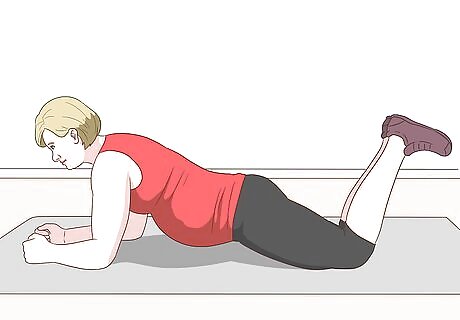
Practice your planks. Assume a plank position on your forearms. Keep your elbows under your shoulders. You can do the plank on your toes or with your knees on the floor. Draw your abdominal muscles in tightly toward your spine. Keep your glutes, pelvic floor and inner thighs tight. Don’t let your hips sag toward the floor. Good form is more important than the length of time you hold the plank.

Get on all fours for cat pose and limb extensions. Begin by placing your hands directly under your shoulders and your knees directly below your hips. Draw your abs in toward your spine, while exhaling slowly and rounding your back toward the ceiling. Release the rounded spine and relax your abdominal muscles. To do arm and leg extensions, keep your back straight, hips even, and core tight. Lift your left leg straight behind you and your right arm straight in front of you. Bring your knee toward your elbow while squeezing your abs, rounding your back, and breathing out. After about 10 reps switch sides.
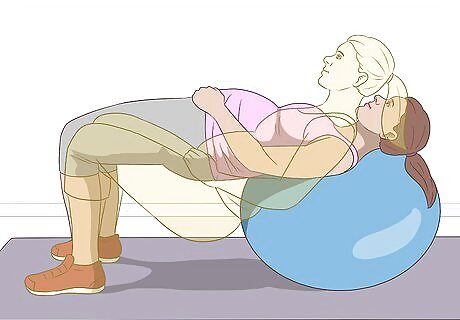
Perform a bridge on a stability ball. Rest your head comfortably on the ball with your neck in a neutral position. Make a 90-degree angle with your hips, knees, and ankles. Lower your hips toward the floor and then lift them back up. If lowering your hips hurts your lower back, just hold the 90-degree position. Make sure your knees are over your ankles and not out in front of your toes. Don’t let the ball roll while you do this exercise.




















Comments
0 comment